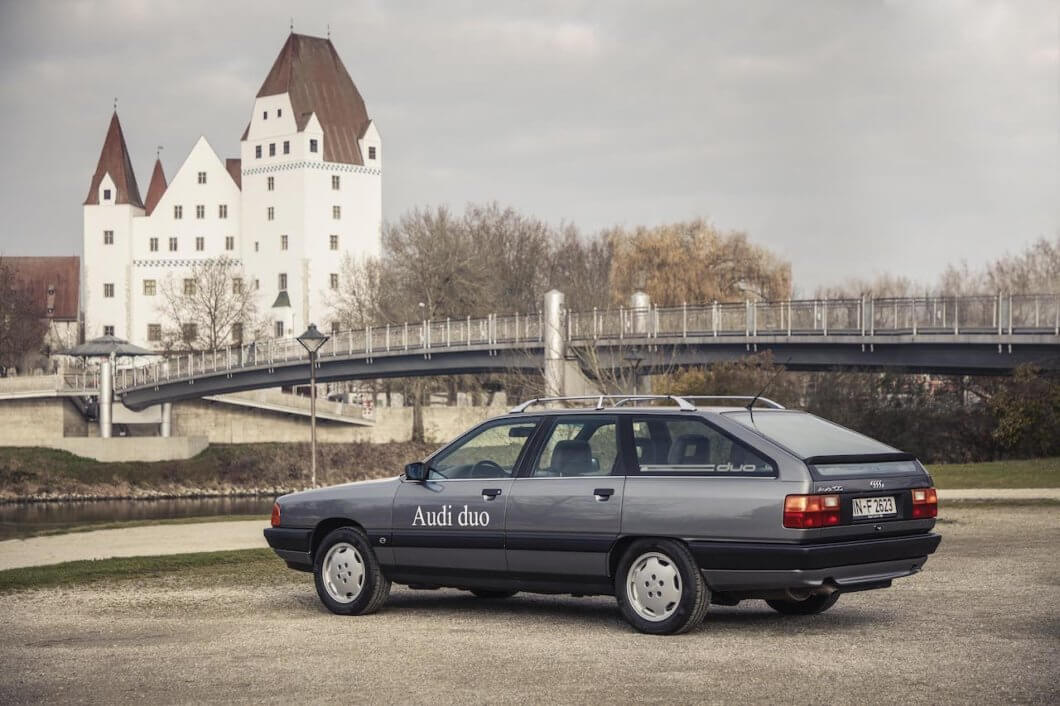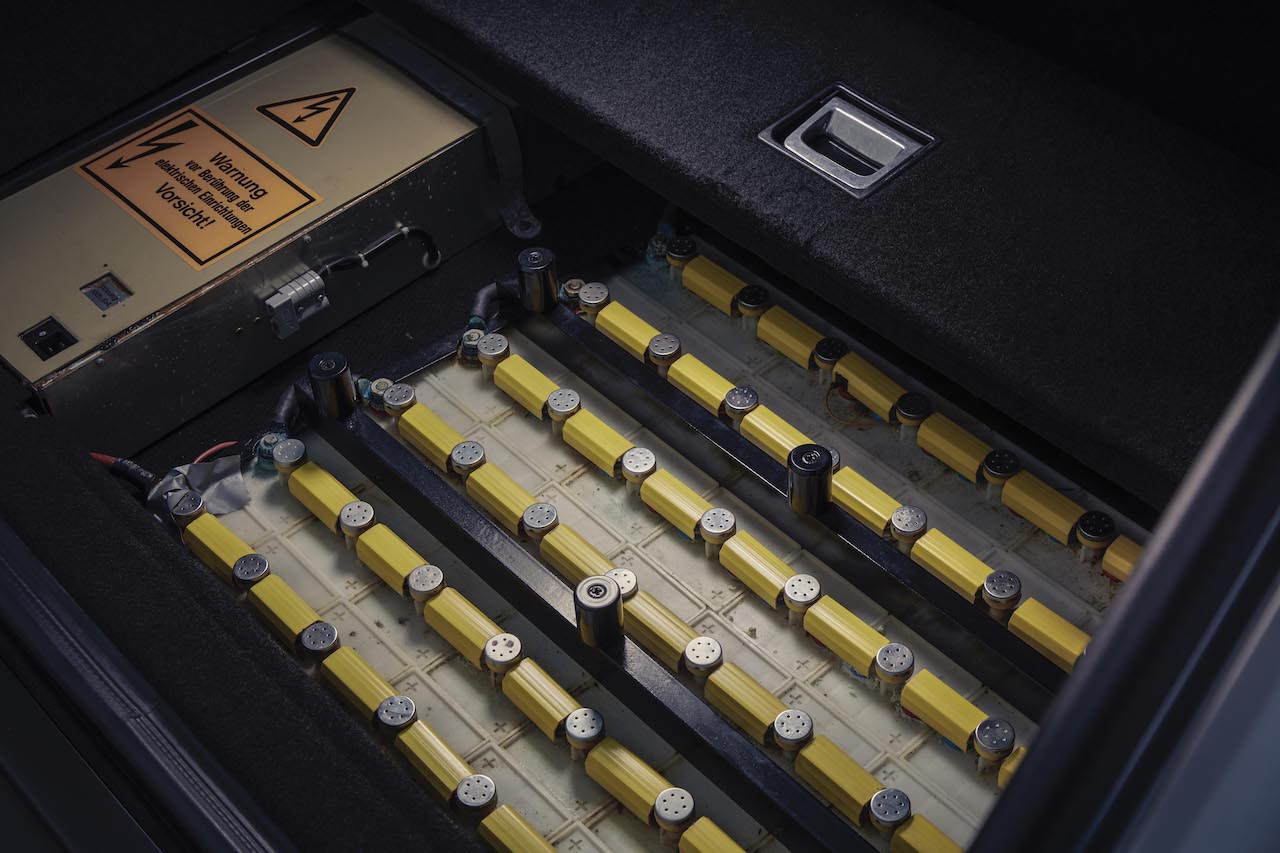PHEVs are often regarded as a relatively recent addition to the motoring landscape, but in fact Audi built its first petrol-electric hybrid car more than 30 years ago. The Audi Duo experimental vehicle was created in 1989, and starred at the following year’s Geneva Motor Show. Based on the elegant 100 Avant, the Duo’s 2.3-litre, five-cylinder petrol engine sent 136PS to the front wheels. At the same time, a nickel-cadmium battery mounted underneath the boot floor powered a 9kW (12.6PS) Siemens electric motor that drove the rear axle. Audi also experimented with a solar-panel roof for the vehicle, to help charge the batteries on sunny days.
Hybrid technology has been enhanced beyond all recognition since then, thanks to the rapid advancements made in efficiency, power and refinement. Models such as the ultra-efficient Audi A7 Sportback 55 TFSI e quattro clearly illustrate this remarkable progress. In the blink of an eye, the car switches automatically – and seamlessly – between electric and petrol driving modes to ensure optimum performance.
Things weren’t quite so simple for the Duo Audi driver, though, who had to put the transmission into neutral and press the ‘E’ button on the dashboard to engage electric mode and access an electric driving range of up to 24 miles.
The ample torque produced by the Duo’s electric motor meant that the car could reach 31mph before the petrol engine needed to take over. In slippery conditions, where all-wheel drive was required to pull away, both power sources worked in tandem. And, despite being built some three decades ago, the Duo included a regenerative braking system, with kinetic energy utilised to charge the battery pack when the brakes were applied.
Created using a completely standard 100 Avant, the Duo also benefited from the production car’s aerodynamic fastback-style body, resulting in an incredibly low aerodynamic drag coefficient that helped the vehicle cut through the air more effectively.
Today, Audi PHEVs such as the A7 Sportback 55 TFSI e quattro, offer three driving modes. Hybrid mode – which is the default when route guidance is active – enables the system to select the most efficient solution automatically, be that fully electric, petrol power on its own, or a combination of both. In EV (Electric Vehicle) mode, the car relies purely on electric power unless the accelerator is pressed purposefully, in which case the engine instantly fires back into life. Finally, in Battery Hold mode, the battery charge is preserved at its existing level.
Back in 1989, only ten examples of the original Duo were built. The cars were trialed in pilot programmes – including use as a taxi in the historic centre of Ingolstadt – but were never put into full production. This immaculate example now enjoys a quiet life in the Audi Museum.
However, Audi continued to explore hybrid technology, and a second version of the Duo based on the Audi 100 Avant arrived in 1991.
Six years after that, Audi became the first European car manufacturer to introduce a limited-edition production PHEV. Also named Duo, it was based on an A4 Avant. It featured a drivetrain incorporating a 90PS 1.9-litre turbodiesel engine and a 29PS water-cooled electric motor, powered by a lead gelatin battery mounted in the rear of the car. Both the engine and the electric motor were used to power the front wheels.
As with the earlier Audi hybrid studies, the production Duo featured plug-in charging, and its electric motor could also recuperate energy during deceleration. In electric mode, the A4 Avant Duo could reach 50mph, and 106mph using TDI power. Ultimately the car proved to be too far ahead of its time, and the market wasn’t ready for it. However, the hybrid technologies that were advanced during the creation of the Duo models has enabled the latest generation of Audi PHEVs to deliver significant efficiency gains, impressive performance and effortless, relaxing driving to customers today.










Pingback: 40 Years of the Audi quattro